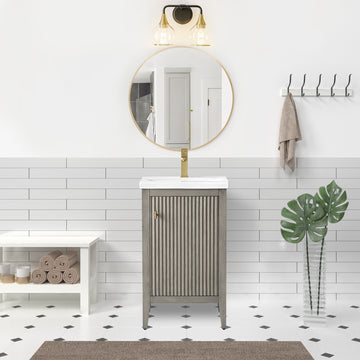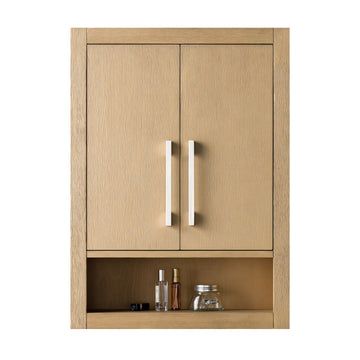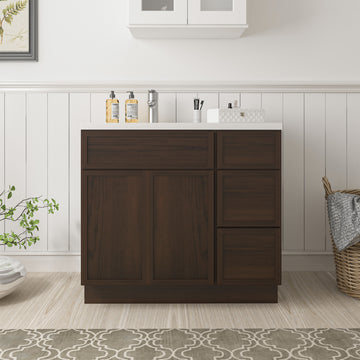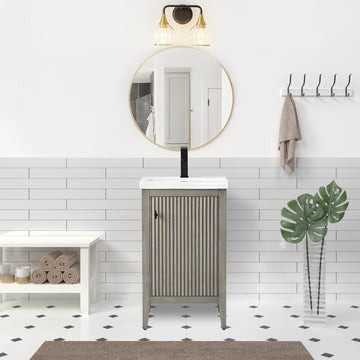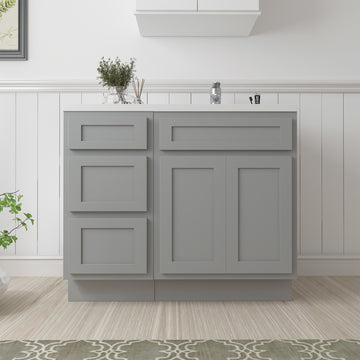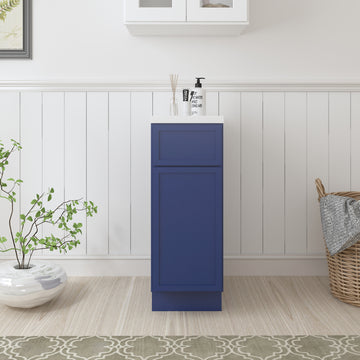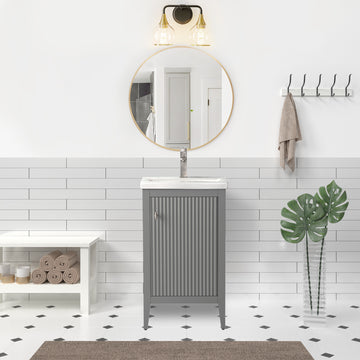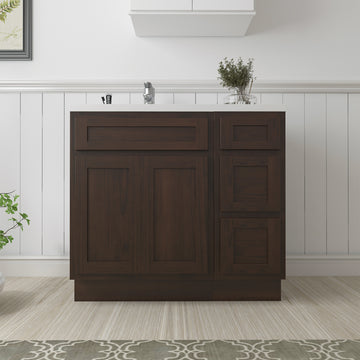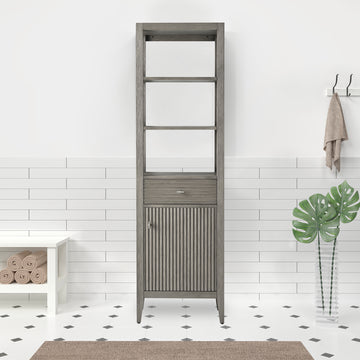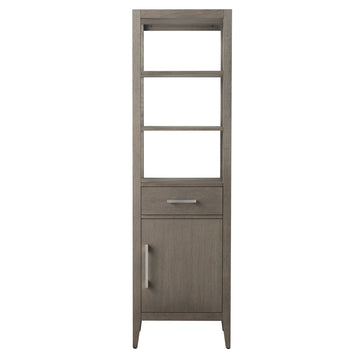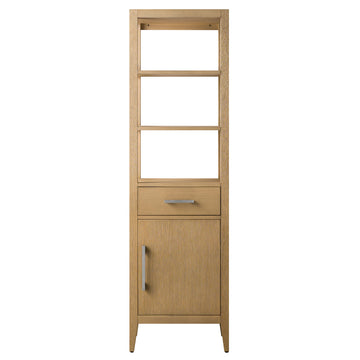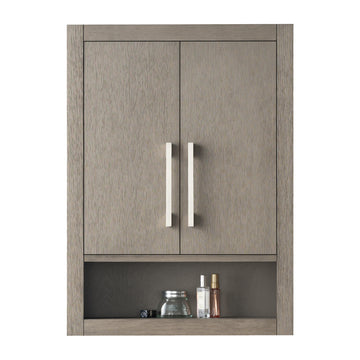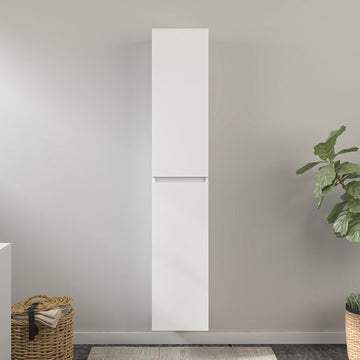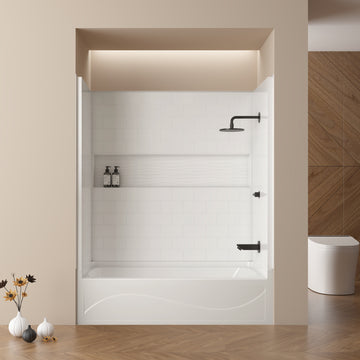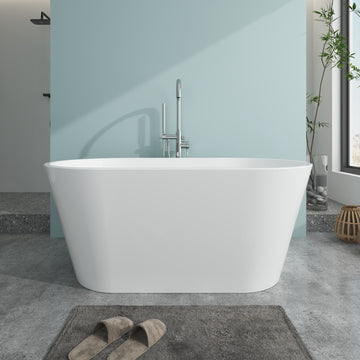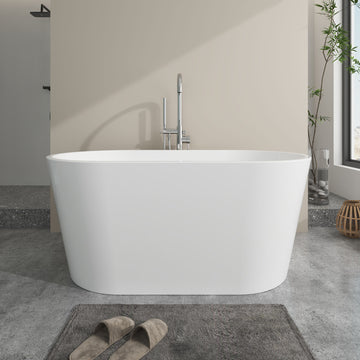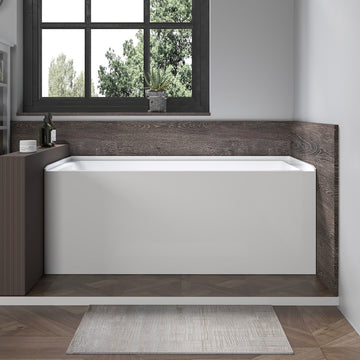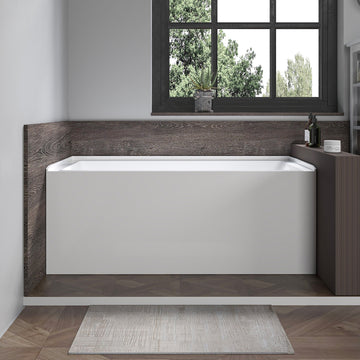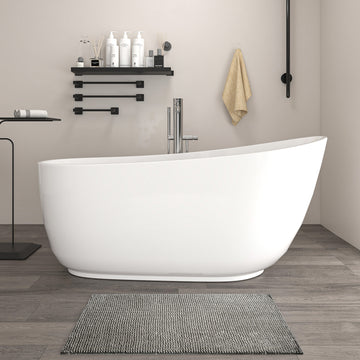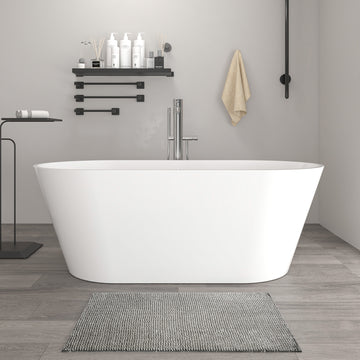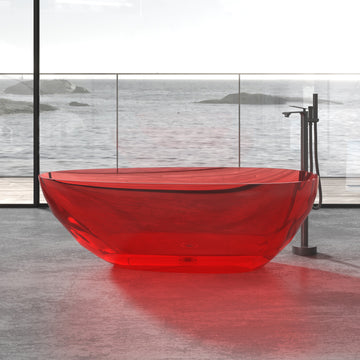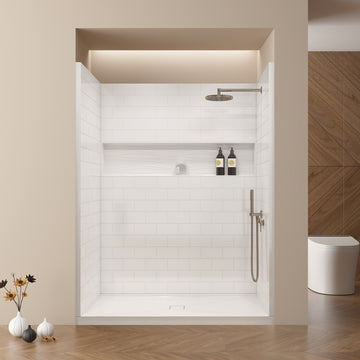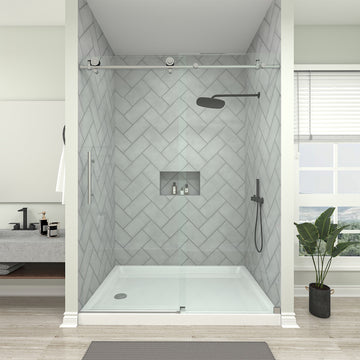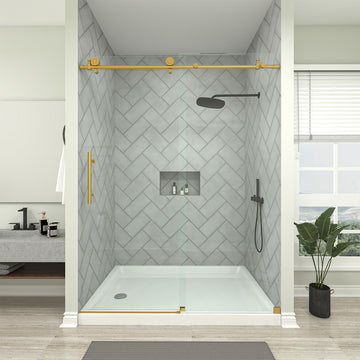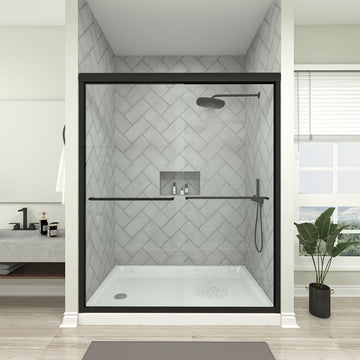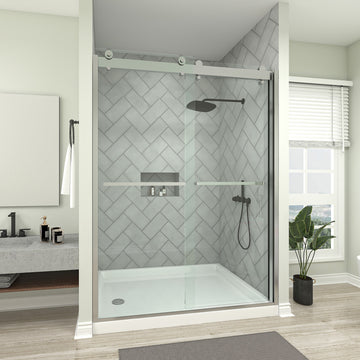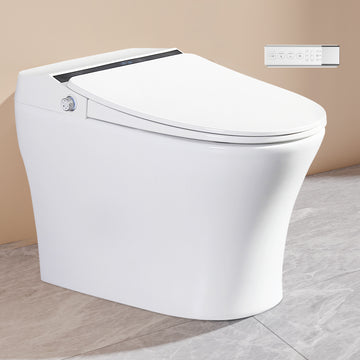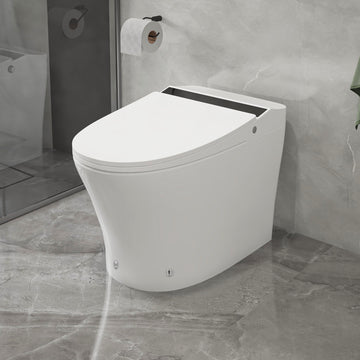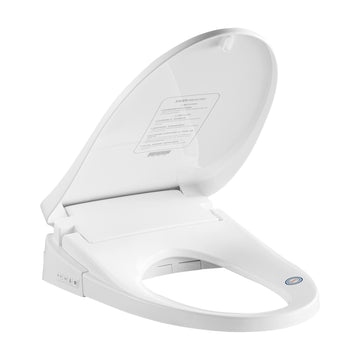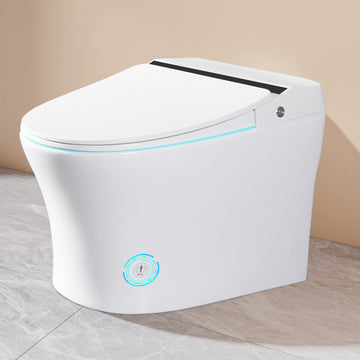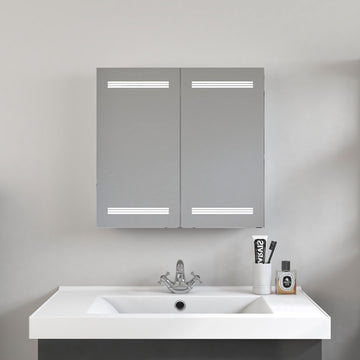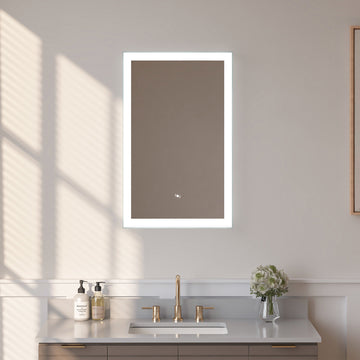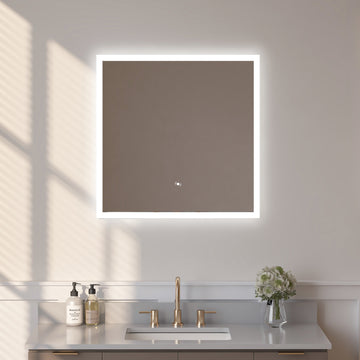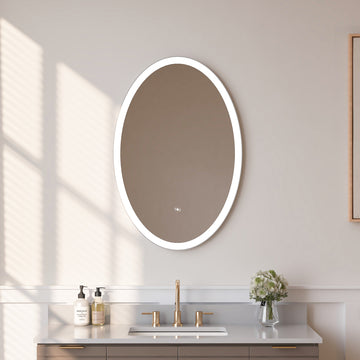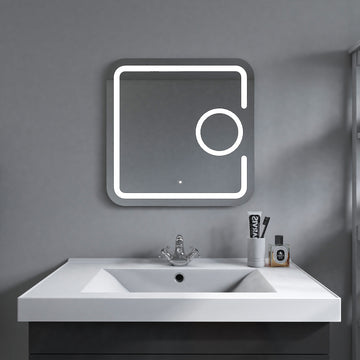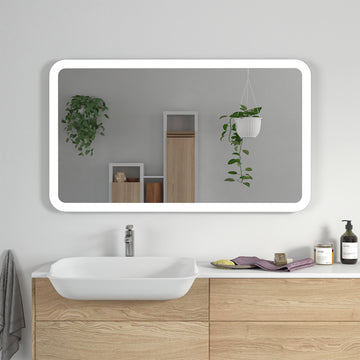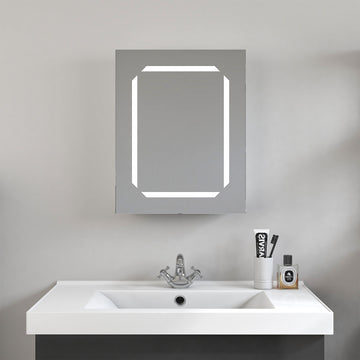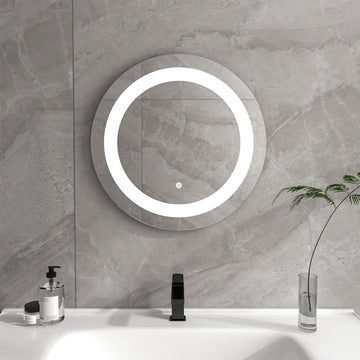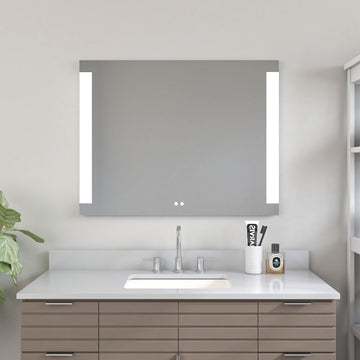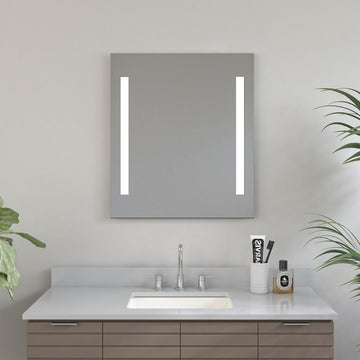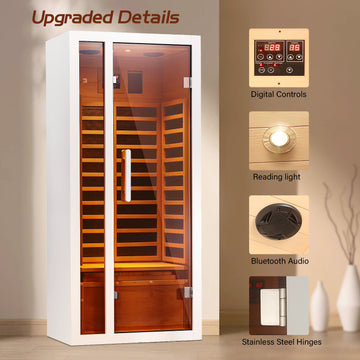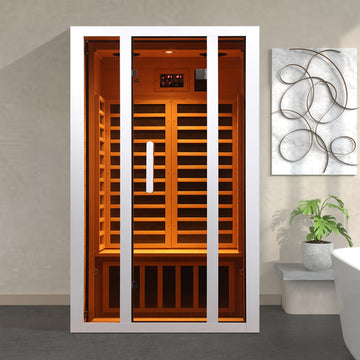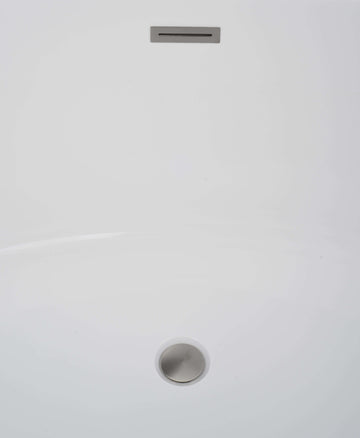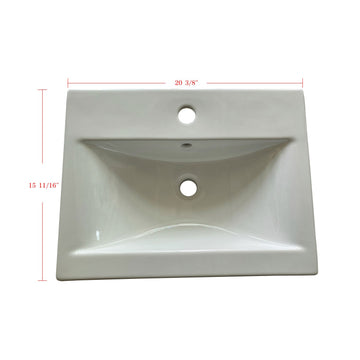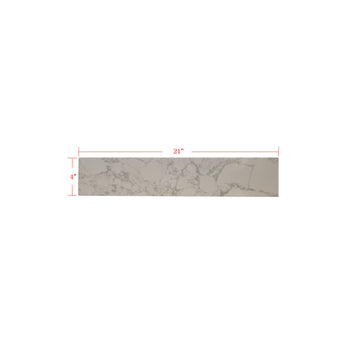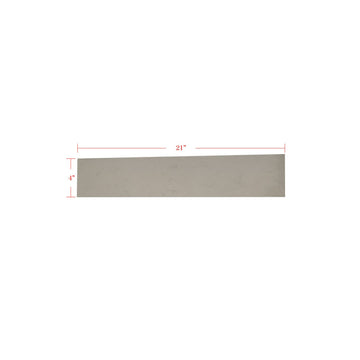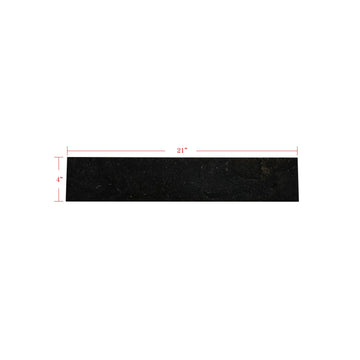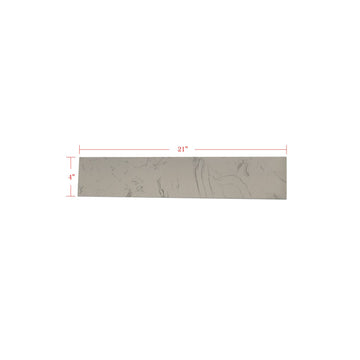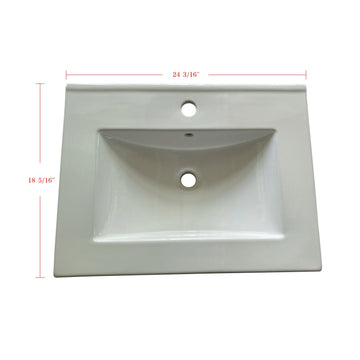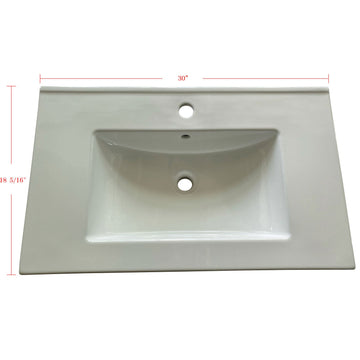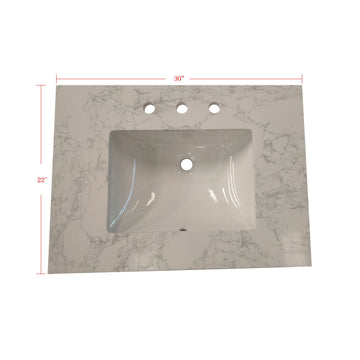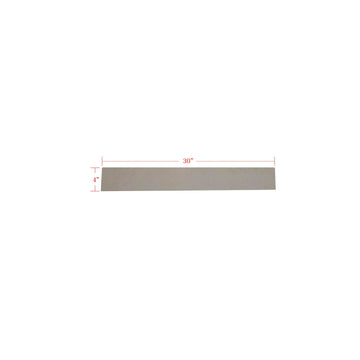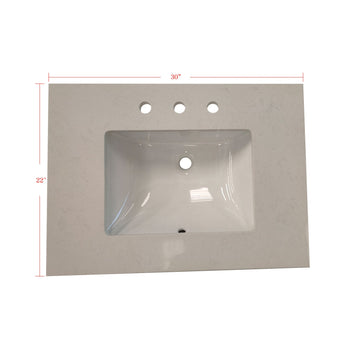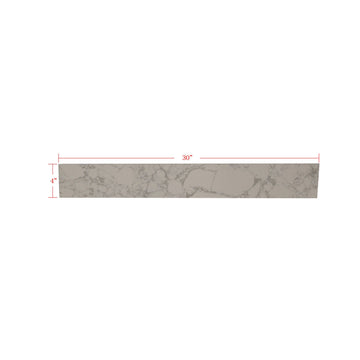You probably use your faucet dozens of times a day, but rarely think about what’s inside. Whether you're troubleshooting a leak or planning a bathroom update, understanding the basic parts of a faucet makes things easier.
This article breaks down what each component does, which ones are shared across faucet types, and which ones are unique. A quick guide to help you know exactly what you're looking at and how to keep it running smoothly.
Anatomy of a bathroom faucet
Most bathroom faucets share a similar internal structure, whether they’re traditional or modern in style. The visible parts are just the surface. Underneath, every faucet relies on a set of essential components that direct water flow, control temperature, and ensure everything works without leaking.
The image above breaks this down clearly, but here’s a general overview of what you’re seeing:
-
The spout is the part where the water comes out. It can be short and low or tall and arched, depending on the faucet design. Inside the spout is an aerator, which controls water pressure and helps reduce splashing.
-
The handle(s) connect to internal cartridges or valves that control hot and cold water. Single-handle faucets combine both into one motion, while double-handle faucets give you separate controls.
Depending on the faucet type, cartridges, ceramic discs, compression valves, or ball valves are beneath the handles. These mechanical parts mix the water and control the flow. They're also the most likely components to wear out over time. -
The escutcheon is the decorative plate that covers the holes in your sink or countertop. Some faucets come with a wide base that hides multiple connections, while others skip it entirely.
-
Finally, underneath the sink, you’ll find supply lines, which connect the faucet to your home’s water system, and mounting hardware, which keeps the entire setup secured in place.
Each part works together to ensure your faucet delivers water reliably and without issues. Understanding this layout makes it easier to identify problems, replace parts, or choose a new faucet that fits your setup.
Spout
The spout is the most visible and defining part of any faucet. It’s where the water exits and flows into the sink. Spouts vary in shape, reach, and height. From low-profile models in minimalist designs to high-arc spouts that provide more clearance. Some include pull-out or pull-down features (more common in kitchen faucets), while others stay fixed. Inside the spout, there's usually an aerator, which mixes air into the water stream to reduce splash and improve pressure efficiency.
Handle
Handles control the flow and temperature of water. You’ll typically see single-handle or double-handle configurations. Single-handle faucets let you adjust both hot and cold water with one motion, while double-handle faucets give you separate controls for each. The choice is often aesthetic and functional. Single handles tend to be easier to use, while double handles offer more precision.
Valve / Cartridge / Disc / Ball Mechanism
This internal component is what actually turns the water on and off. Depending on the faucet type, it may be a compression valve (used in older models), a ball valve (common in older single-handle faucets), a ceramic disc, or a cartridge. These parts regulate how water is mixed and released. When a faucet leaks or drips, it’s usually because this internal mechanism has worn down or failed.
Aerator
Screwed into the tip of the spout, the aerator is a small mesh screen that introduces air into the water stream. It softens water flow, reduces splashing, and helps conserve water without sacrificing performance. If you notice an uneven or weak stream, a clogged aerator is a common culprit.
Escutcheon
The escutcheon is the flat plate at the base of the faucet. It’s mostly decorative, covering unused holes in the sink or countertop and giving the faucet a clean finish. Some faucets are designed to be installed with or without an escutcheon, depending on your sink setup.
Mounting hardware
Located underneath the sink, the mounting hardware includes nuts, brackets, or washers that secure the faucet body in place. If your faucet ever feels loose or wobbly, the mounting hardware likely needs tightening.
Supply lines
These are the flexible hoses that run from your home’s plumbing to the faucet’s internal valve. They carry hot and cold water and are usually made of braided stainless steel or reinforced plastic. Faulty supply lines are often the cause of leaks under the sink.
Gasket and O-Rings
These small rubber or silicone parts create watertight seals between different components. You’ll find them inside the spout, handles, and connections. Over time, gaskets and O-rings can dry out or crack, leading to slow leaks or drips.
Different types of faucets
While most faucets share the same core components like spouts, handles, valves, and cartridges, the internal structure and a few specialized parts vary depending on the faucet type. Compression faucets, for example, use rubber washers and stem screws, a simpler design that’s prone to wear and tear but easy to repair. Ball faucets, on the other hand, incorporate a rotating ball and a series of seals and springs to mix hot and cold water, making them slightly more complex. Cartridge faucets rely on a cylindrical cartridge that controls water flow and temperature more precisely and with fewer leaks, while ceramic disc faucets use two flat, durable ceramic discs to do the same job with even greater longevity.
Other designs like wall-mounted or Roman tub faucets introduce even more variation. Wall-mounted faucets require internal mounting hardware behind the wall, and Roman faucets involve additional valves and spouts spread across the tub deck. These configurations come with their own set of unique parts and installation considerations. For a more detailed breakdown of faucet types and their differences, you can refer to our dedicated article on types of bathroom faucets.
Maintenance and installation tips for bathroom faucets

Keeping a faucet in good condition comes down to routine care and a few preventative habits. Mineral buildup, especially in areas with hard water, can wear out internal components and ruin finishes. It helps to clean the aerator regularly, that’s the mesh screen at the tip of the spout, by unscrewing it and soaking it in vinegar to clear out sediment. Wipe down the exterior parts with a non-abrasive cloth and mild soap, especially around the handles and base, where grime tends to settle. Avoid strong chemical cleaners, as these can corrode the finish over time.
If your faucet has ceramic discs or a cartridge, pay attention to early signs of stiffness or uneven water flow. These often indicate the need for a replacement part, which can prevent larger issues down the line. And when a leak appears, don't wait, even small drips can lead to higher bills and unnecessary wear.
For installation, one of the most overlooked but important steps is ensuring the faucet matches your sink or countertop configuration. Single-hole faucets won't fit three-hole setups without a deck plate, for example. Always shut off the water supply before beginning, and double-check fittings and washers for tightness. Use plumber’s tape around threaded connections to avoid leaks, and when tightening, be firm but not aggressive. Over-tightening is one of the most common causes of cracked valves and fittings.
If you're not confident in plumbing work, it's better to consult a professional. Especially for wall-mounted or Roman-style faucets, which may require access behind walls or under the tub deck. A good install sets the tone for easier maintenance in the years ahead.
Wrapping up
Knowing the parts of a faucet is helpful for anyone trying to maintain their bathroom or kitchen hardware without unnecessary stress. Recognizing the components like the valve, spout, aerator, and handle mechanisms can make repairs faster, installation easier, and troubleshooting less frustrating. It also helps you communicate clearly if you ever need professional help.
While faucets may seem simple on the surface, their inner workings involve a mix of design and function that varies between types. Whether you're dealing with a cartridge faucet or planning to replace an old compression-style one, having a general understanding of what’s inside the housing can save time, money, and guesswork.
